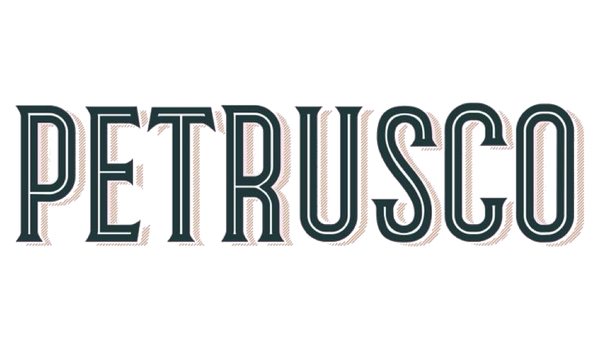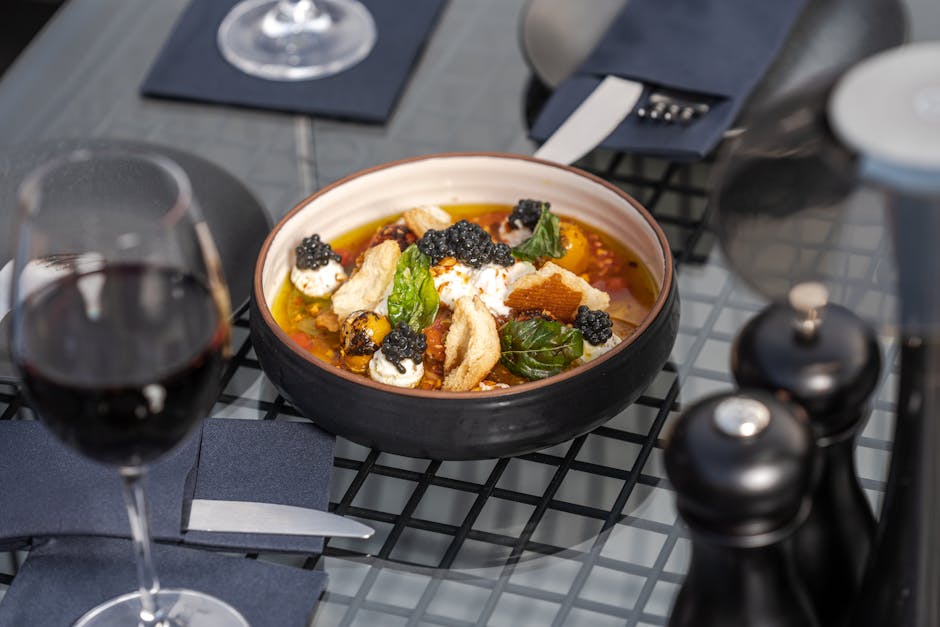Introduction to Pairing Fine Wines with the Best Caviar
So, you want to pair fine wines with the best caviar, huh? Well, you’ve come to the right place. It’s more than just picking expensive wine and fancy caviar. It’s about matching flavors that complement each other. Think of it like finding the perfect dance partner; when it’s right, it’s magic. Caviar, with its rich, salty profile, pairs beautifully with wines that offer a crisp acidity, a bit of sweetness, or a bubbly personality to balance those luxurious flavors. Whether you’re a newbie or a seasoned pro, understanding the basics of this pairing will elevate your experience from good to unforgettable. Let’s dive in and explore how to make these elegant pairings shine.
Understanding the Different Types of Best Caviar
Caviar comes in many forms, but not all are created equal. When talking about the best, most caviar experts focus on three main types: Beluga, Osetra, and Sevruga. Beluga caviar, known for its soft and large eggs, is often seen as the pinnacle of quality, with a creamy, rich flavor that is unparalleled. It’s also the rarest, making it the most expensive. Osetra caviar, with its nutty and slightly sweet taste, varies in color from deep brown to gold. It’s prized for its firm and juicy eggs, making it a middle-ground option for both price and taste. Sevruga, the most affordable of the top-tier caviars, offers smaller, more intense flavored eggs. It provides a punchy taste that pairs beautifully with stronger wines. Each type of caviar presents a unique flavor profile, making the pairing with fine wines a delightful culinary adventure. Your choice in caviar can elevate the tasting experience, enhancing both the wine and the delicate fish eggs on your palate. Remember, the best caviar for you comes down to personal preference in taste and how much you’re willing to spend.
Selecting the Perfect Wine for Caviar
When it comes to caviar, not just any wine will do. You’re aiming for a match that elevates both the wine and the caviar, creating an unforgettable taste experience. Stick to wines that are high in acidity and have a crisp, clean profile. Champagne is a classic choice, its bubbles and brightness complementing the rich, salty flavors of caviar. If you’re not into sparkling, consider a dry white wine like Chablis or a Sauvignon Blanc. These wines, with their sharp acidity and mineral notes, balance the luxurious texture of caviar. Avoid heavy, oaky wines as they can overwhelm the delicate taste of the caviar. Remember, the goal is to enhance, not overshadow, so choose wisely.
Flavor Profiles: Matching Wine with Caviar’s Complexity
When it comes to enjoying caviar, finding the right wine can elevate your experience. Caviar has a rich, salty profile that needs a wine that complements, not overpowers it. Champagne is a classic choice. Its crispness and bubbles cut through the richness of the caviar, creating a perfect balance. For a still wine option, consider a Chablis; its mineral notes and slight acidity pair nicely with the saltiness of caviar. If you’re into something a bit more unconventional, a dry Riesling offers a sweet contrast, highlighting caviar’s complexity without overshadowing its flavor. The key is balance; you’re looking for a wine that can stand up to the caviar without taking over the spotlight. Let’s not forget, every palate is unique, so experimenting with different pairings to find what pleases your taste buds is part of the fun.
Top Recommended Wine and Best Caviar Pairings
When it comes to luxury, few pairings hold a candle to wine and caviar. It’s all about complementing flavors and textures. First off, let’s talk caviar. Beluga, Ossetra, and Sevruga are the big players, offering a range of tastes from buttery to nutty. Now, pairing these with wine? That’s where the magic happens. For Beluga, with its creamy and rich texture, go for a dry and crisp Champagne. The bubbles and acidity cut through the richness beautifully. Ossetra, with its nuttier profile, matches well with a Chardonnay, preferably something with a bit of oak to echo the caviar’s complexity. Sevruga, on the leaner side, calls for something that can match its delicacy. A good choice here would be a mineral-driven Sauvignon Blanc, offering brightness that complements without overwhelming. Remember, good pairings enhance the flavors of both the wine and the caviar, making each taste even better.
Serving Suggestions for an Elegant Experience
When you’re pairing fine wines with the best caviar, the serving suggestions are straightforward but crucial for an elegant experience. First, always serve caviar chilled; it keeps its flavors intact. Use a non-metallic spoon, like one made out of mother of pearl or glass, to avoid any unwanted metallic taste that can interfere with caviar’s delicate flavor. Now, onto the wine. Choose a crisp, dry white wine or Champagne as they complement caviar without overpowering it. If you prefer, a neat, chilled vodka also pairs flawlessly, cutting through the caviar’s richness. Remember, simplicity in presentation is key. Lay out the caviar on a bed of ice with blinis or lightly toasted bread on the side. Add a touch of elegance with a few dollops of crème fraîche. This setup isn’t just about taste; it’s about creating an experience that feels luxurious and memorable. Stick with these suggestions, and your pairing will be nothing short of spectacular.
The Importance of Temperature and Presentation
Getting the temperature and presentation right can make or break your fine wine and caviar experience. For starters, keep your caviar chilled until it’s time to serve. This means storing it in the coldest part of your fridge, ideally between 26 to 36 degrees Fahrenheit. Why? Because caviar tastes best when it’s cold. It keeps its delicate texture and flavors intact. As for the wine, serve it slightly chilled, but not too cold. Aim for about 45 to 50 degrees Fahrenheit for white wines, as this temperature highlights their crispness and complements the caviar’s saltiness.
When it comes to presentation, think elegance but simple. Use mother-of-pearl or wooden spoons instead of metal ones to avoid a metallic taste. Serve the caviar on a bed of ice with the container slightly open. This not only keeps it at the ideal temperature but also adds a touch of class to your presentation. And remember, fine wine should be poured into the right glass to allow it to breathe and to ensure that its essence is captured with every sip. By focusing on these details, you’ll elevate your pairing to an unforgettable culinary experience.
Expert Recommendations for First-Timers
Starting your journey into the world of fine wines and caviar can be exciting but also a bit overwhelming. Here’s the deal: you want to make sure you’re picking the right combinations to truly enjoy the experience. First things first, let’s talk champagne. It’s a classic and for a good reason. A crisp, dry champagne pairs wonderfully with the saltiness of caviar. Look for brut or extra brut for the best match. If champagne isn’t your style, no worries. A nice, dry white wine like a Chardonnay or a Sauvignon Blanc does the trick too. They have the right balance of acidity to complement the caviar without overpowering it.
Moving on, it’s not just about the drink, but also about how you serve the caviar. Keep it simple. A small spoon (ideally not metal to avoid altering the taste), some unsalted crackers or blini, and maybe a dab of crème fraîche. That’s all you need. This lets the delicate flavors of the caviar shine without any distractions.
Lastly, remember it’s all about enjoying the experience. Don’t get too caught up in the “right” way to do things. Taste, adjust, and find what works for you. Cheers to your new gourmet adventure!
Pairing Tips for the Seasoned Connoisseur
Pairing wine and caviar is an art, rooted in matching flavors that enhance each other. For the seasoned connoisseur, here’s a simplification: choose your wine based on the caviar’s richness. Traditional caviars like Beluga, which boast a buttery, luxurious flavor, marry well with dry, aged whites such as a classic Champagne or a Chardonnay. These wines are crisp enough to cut through the richness without overpowering the delicate taste of the caviar. If you’re indulging in a saltier caviar, like Sevruga, opt for a wine that can stand up to the intensity, like a mineral-rich Sauvignon Blanc or a dry Riesling. The goal is balance. The wine should not overshadow the caviar, but rather, provide a canvas that allows the caviar’s taste to shine fully. Remember, the temperature is key. Serve your wine chilled, but not too cold, to avoid numbing the palate. This ensures that both the wine and caviar’s flavors are not compromised. Finally, trust your own taste above all. The best pairings are those that delight your personal palate.
Concluding Thoughts: Elevating Your Culinary Adventure
Mastering the art of pairing fine wines with the best caviar is an elegant journey towards elevating your culinary experiences. Remember, it’s not just about mixing any wine with any caviar. It’s about creating harmony between the rich, salty flavors of the caviar and the wine’s complexity that can either accentuate or balance these nuances. Start with lighter wines and classic caviars and slowly explore bolder combinations as you become more comfortable. Each pairing should be a new adventure, an opportunity to delight and surprise your palate. Don’t be afraid to experiment. Sometimes the most unexpected pairings yield the most extraordinary experiences. Cheers to your culinary adventures, may they be as enriching as they are delicious.

